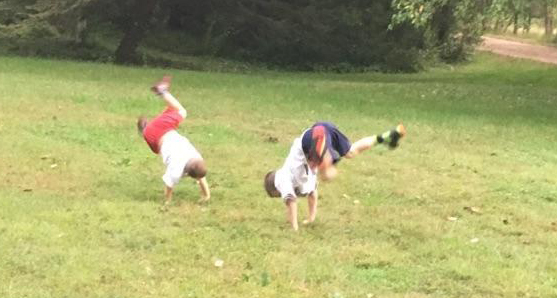Often when people are trying to find a trademark for their good or service, they want a mark that hearkens back to whatever it is that they are selling. They want their customer to “know” what it is the customer is buying. But as we have discussed earlier, descriptiveness can be bad. So what is a potential trademark owner to do? If they aren’t ready to take the leap into arbitrary or fanciful, like we talked about here, suggestive marks are a good way to go. Suggestive marks, like fanciful and arbitrary marks, are registrable on the Principal Register without proof of secondary meaning.
It is well settled that a term is considered to be merely descriptive within the meaning of Section 2(e)(1) of the Trademark Act, if it immediately conveys information about an ingredient, quality, characteristic, feature, function, purpose or use of the goods or services with which it is being used. However, if a term requires a customer to exercise imagination, thought or perception to reach a conclusion as to the product, the term is suggestive.
That means that a suggestive term differs from a descriptive term, which immediately tells something about the goods or services. For example, SPEEDI BAKE for frozen dough was found to fall within the category of suggestive marks because it only vaguely suggests a desirable characteristic of frozen dough, namely, that it quickly and easily may be baked into bread. Does it describe something about the bread? Sure. But it isn’t immediately obvious. A mark does not have to be devoid of all meaning in relation to the goods or services to be registrable.
Another example is SNO-RAKE was held not merely descriptive for a snow removal tool, and stating: “The concept of mere descriptiveness, it seems to us, must relate to general and readily recognizable word formulations and meanings, either in a popular or technical usage context, and should not penalize coinage of hitherto unused and somewhat incongruous word combinations whose import would not be grasped without some measure of imagination and ‘mental pause.’”
In English, that says, you don’t usually connect rakes with snow so you have to make a jump to figure out what exactly that product might be doing. Or slightly more formally: A customer must exercise mature thought or follow a multi-stage reasoning process in order to determine what product or service characteristics the term indicates. That makes the term suggestive rather than merely descriptive.
All this being said, please don’t try to see how close you can get to the descriptive line. Remember that the owners of both SPEEDI BAKE and SNO RAKE had to go through some pretty big, expensive fights for me to get those examples. One reason we are trying to avoid descriptive marks is to avoid those kinds of fights! Think of characteristics of your goods or services and then go one (at least baby) step further away from that. Your customer doesn’t need to do an entire tumbling pass, but a nice cartwheel will go a long way to having a strong mark.



Hi, Erin. This is a very interesting discussion – and clarifying, too. If it’s not too much trouble, would you please tell me whether my mark/name is descriptive or suggestive? I think its suggestive because people have to sort of guess what I’m referring to. But confirmation from you would mean a lot. The name is “Posturally.” And it refers to developing good posture and pain relief consciously. Posturally also refers to a way of doing something (ie posturally.) Thanks!
Anne, I don’t want to provide legal advice via blog comments. Ethics rules and all of that. However, A lot of marks fall on the line between the two, and we attorneys get to fight each other and the USPTO to prove why our client is correct. One way to test your theory is to go and ask people: What kind of services do you think I provide using this term? What do you think my services relate to? Of course, using language that sounds like you. If most people guess that it has to do with good posture, then it probably falls on the descriptive side. The longer they have to ponder and guess, the more likely it is suggestive.